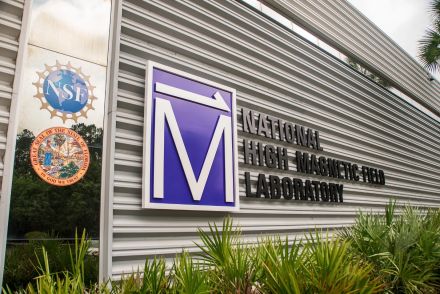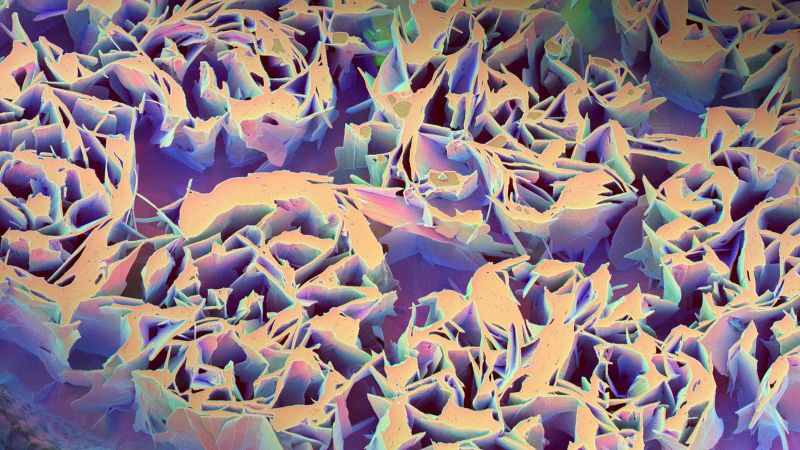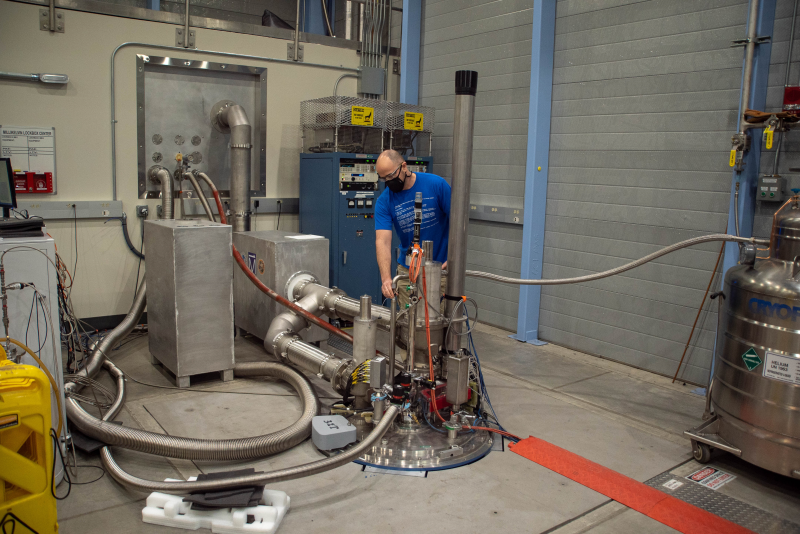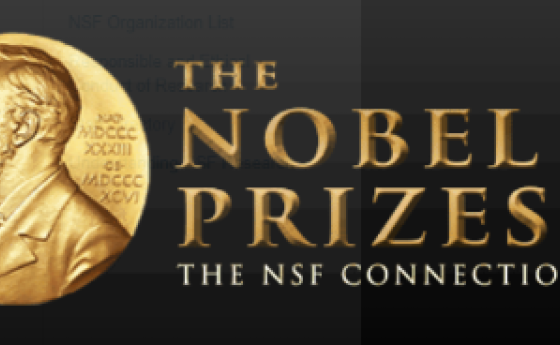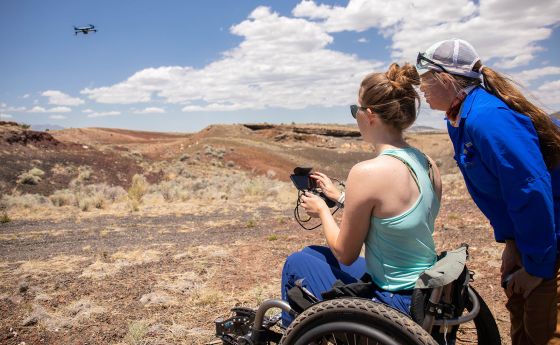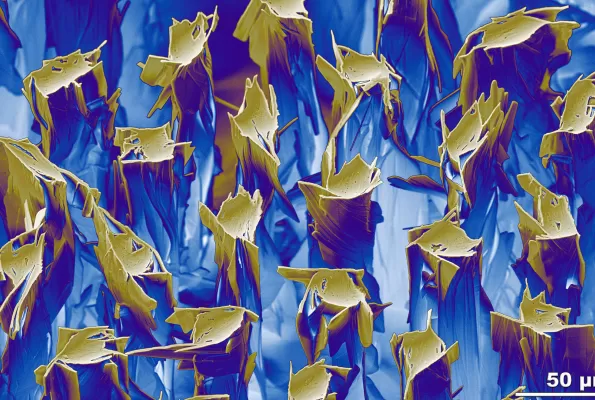
MagLab makes magic with magnets
NSF-powered facility attracts economic, scientific benefits for Florida, nation
That magnet on your refrigerator? Let's supersize it. Imagine it's 1 million times more powerful than Earth's magnetic field and as heavy as a small herd of elephants. Imagine it's powerful enough to image not just the organs but the individual cells in your body.
Now imagine a fleet of super magnets together in one place where thousands of researchers, engineers and others from hundreds of universities, labs and businesses around the world come to advance discovery across physics, materials sciences, chemistry, biology and engineering. And access is free if you submit a proposal that survives the competitive selection process for magnet time.
This is the National High Magnetic Field Laboratory, or MagLab, a U.S. National Science Foundation flagship facility headquartered at Florida State University in Tallahassee. Two MagLab partners, the University of Florida in Gainesville and Los Alamos National Laboratory in New Mexico, also host magnets. NSF provides core funding, along with the state of Florida and the U.S. Department of Energy.
"The MagLab research portfolio touches so many of today's major scientific challenges," said Director Greg Boebinger. "High magnetic fields are revealing new materials for quantum technologies, combatting climate change, protecting human health, enabling the magnet-based machines of the future and paving the way to new energy solutions."
Leonard Spinu NSF's program director for MagLab, said the laboratory "continues to lead by forging paths for advances with significant societal impact. High magnetic fields unleash probing capabilities that enable scientists to address fundamental questions in a swath of disciplines."
Dedicated in 1994, MagLab has contributed to more than 10,000 peer-reviewed publications and more than 100 patents. FSU's Center for Economic Forecasting and Analysis calculates that every $1 that NSF invests in the facility leads to $6.44 of economic activity in the state. And NSF just announced it will continue to support MagLab with $195.5 million in funding over the next five years.
Magnets as research tools
So, what's a magnet? It's anything that produces a magnetic field. Various elements, alloys and minerals can be magnetized, as can anything that has a moving electric charge — even a toaster — because electrons on the move create a magnetic field.
An electromagnet is made from wire coils — copper is a great conductor — that produce a magnetic field when an electric current passes through. The more coils and the stronger the current, the stronger the field. Even schoolkids can make simple electromagnets out of household batteries, a nail and copper wire.
At MagLab, electromagnets are massively scaled up. Instead of copper wire, they use stacks upon stacks of specialized copper and silver disks, and the electricity pumped through is roughly 30,000 times the amount used to power a toaster. To generate world-record magnetic fields, MagLab uses nearly 10% of the total power consumed by a city like Tallahassee.
For a typical experiment, a material or object is placed inside a magnet to see what happens to electrons in the material when subjected to a strong magnetic field at very cold temperatures, which enable particles to move faster with little to no friction.
"Our magnets are research tools," Boebinger said. "Much like a powerful laser or an accelerator or an X-ray source, magnetic fields can probe many, many things of interest to physicists, like new materials that can make next-generation devices, and to chemists who are interested in probing chemical structures, and to biochemists interested in doing magnetic resonance imaging."
That research runs the gamut. In climate change and environmental research, for example, magnetic fields can weigh 100,000 different molecules in a complex fluid. Researchers can use that capability to help turn petroleum into a fine-grade fuel or identify pollutants in river water. They can analyze a tar ball on a beach to determine the source and how best to clean it up.
MagLab is also on the frontier of the physics of materials, probing materials even a few atoms thick to study how electrons behave in nearly two-dimensional environments.
MagLab's MRI magnets are seven to 20 times more powerful than those in a typical hospital or medical center, creating high-definition images of individual cells. By using magnets in combination with other compounds, investigators can explore how disease impacts cell metabolism, how the brain functions differently after a stroke and much more.
On the micro level, scientists explore quantum materials, where each atom is its own nano-universe with unique rules and behaviors. On the macro, they study the chemical makeup of Saturn's moons, meteorites from Mars, and Earth samples billions of years old.
Meet some magnets
MagLab features four types of magnets. Three types can run for many hours at a time: resistive, superconducting (which requires supercold conditions but can run non-stop) and hybrids that combine elements of the two. The highest magnetic fields are achieved by pulsed magnets that operate for less than a second at their peak fields. Here a few of MagLab's heavy hitters, which have magnetic fields so strong they're measured in teslas, a definition of magnetic flux density or strength. For comparison, Earth's magnetic field ranges between 30-65 millionths of a tesla.
- The two-story 45 tesla hybrid provides researchers the strongest continuous magnetic field on the planet and is one of only a handful of hybrid magnets. It requires liquid helium to keep its biggest coils superconducting at a supercold 1.8 kelvin, or -456 degrees Fahrenheit.
- The 32 tesla superconducting magnet is the world's most powerful all-superconducting magnet and the first instrument ever to leverage the power of high-temperature superconducting materials. "High temperature" is relative, though, since these materials superconduct at temperatures from absolute zero, or -459.7 Fahrenheit, to -300. R&D World just named this magnet one of the 100 revolutionary scientific ideas and technologies of the past year.
- The 100 tesla pulsed magnet at MagLab's Los Alamos site produces the highest nondestructive magnetic field in the world. Higher-field magnets exist but can't withstand a field that high and explode after brief experiments. By pulsing the magnet in bursts that last 15 milliseconds, Los Alamos holds the world record for the highest field ever generated without blowing something up, enabling rare precision measurements.
With instruments like these, MagLab is achieving milestones in science, with plenty of potential for more, such as:
- Exploring the bizarre "Lazarus superconductivity" discovered in a uranium-based compound. After a magnetic field kills off this material's superconductivity, the field is cranked up to record-high levels, and the superconductivity inexplicably springs back to life. This material might one day revolutionize our understanding of superconductivity.
- Using magnets to manipulate electron spin to develop quantum bits, or qubits, the basic units of information in quantum mechanics, and explore new candidate materials for qubits of the future.
- Developing materials that could advance the use of powerful magnets — rather than lasers — to one day achieve the challenging fusion reaction needed for the Holy Grail of clean and abundant power: fusion energy. Many believe that magnets will be easier than lasers to scale up for a fusion energy source on an industrial scale.
"People who are attracted to work at the MagLab have an element in their makeup such that they enjoy working in a collaborative mode to get great science done," Boebinger said. "There's nothing I enjoy more than learning the latest in physics, chemistry, engineering, materials, biochemistry and biomedicine. It's as if I have a living, real-world Wikipedia for which people are rewriting the pages on a daily basis."

